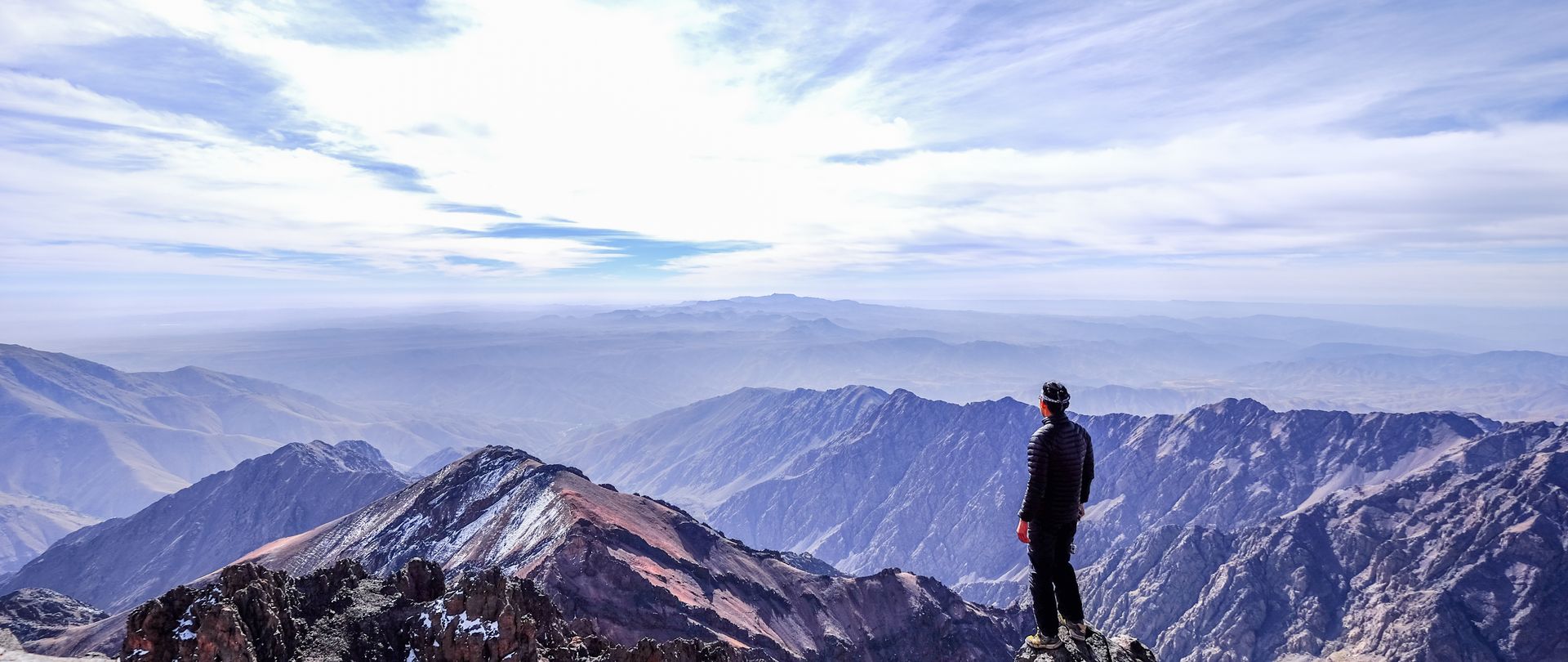Mount Toubkal Morocco Mount Toubkal, located in the Atlas Mountains of Morocco, stands as the highest peak in North Africa, reaching 4,167 meters (13,671 feet) above sea level. For adventurers, mountaineers, and trekkers, understanding the weather on Mount Toubkal is crucial to ensuring a safe and enjoyable experience. Whether you’re planning a challenging summit attempt or a scenic trek through the lower slopes, the weather can change rapidly and drastically, making it essential to be well-prepared.
In this comprehensive guide, we’ll explore the climate on Mount Toubkal, the best times to visit, and how to prepare for your adventure.
Climate Overview: What is the Weather Like on Mount Toubkal?
The weather in the Toubkal region is influenced by its high elevation and location in the Atlas Mountains. The climate varies dramatically depending on the altitude, time of year, and whether you’re trekking in the lower foothills or ascending to the summit.
At the base of Mount Toubkal, in the town of Imlil, the weather is more temperate, while the conditions at the summit can be extreme, with snow and freezing temperatures even during the summer months. Here’s a detailed breakdown of the Toubkal weather:
1. Winter Weather on Mount Toubkal
Winter in the Toubkal region is typically from November to March, with the coldest months being December and January. During this time, the summit of Mount Toubkal is covered in snow, and temperatures can drop below freezing, especially at night.
- Daytime temperatures at the summit can be around 0°C to -5°C (32°F to 23°F), while nighttime temperatures can plummet to -10°C or lower (14°F).
- The lower slopes of Mount Toubkal (like Imlil) experience milder temperatures, ranging from 5°C to 15°C (41°F to 59°F), but it can still get quite chilly.
- Snow and ice are common in winter, and the terrain becomes more challenging, requiring mountaineering skills, special equipment (like crampons and ice axes), and possibly the assistance of a guide.
This is the least popular season for trekkers due to the difficult conditions, but if you’re experienced in winter mountaineering, the Toubkal summit in winter can be a thrilling challenge.
2. Spring Weather on Mount Toubkal

Spring, from April to June, is one of the best times to visit Mount Toubkal, especially for those looking to avoid the extreme cold of winter and the heat of summer. Temperatures at the summit during spring are still cool, but much more manageable.
- Daytime temperatures at the summit range from 5°C to 10°C (41°F to 50°F), with nighttime temperatures dropping to around 0°C to -5°C (32°F to 23°F).
- The lower altitudes are warmer, with temperatures in Imlil ranging from 10°C to 20°C (50°F to 68°F), making it ideal for trekking and hiking.
- Spring is also the season when the snow begins to melt, exposing the rugged landscape of Toubkal, which makes the trek more accessible for non-experienced hikers.
Tip: It’s advisable to carry layers of clothing, including a waterproof jacket, as spring weather can sometimes be unpredictable with sudden rain showers.
3. Summer Weather on Mount Toubkal
Summer, from July to September, brings warm to hot temperatures in the valleys and foothills. However, the weather on the summit of Mount Toubkal remains cold and can be unpredictable.
- Daytime temperatures at the summit remain cool, between 0°C and 5°C (32°F and 41°F), while nighttime temperatures can still drop below freezing, especially at higher altitudes.
- At the base of the mountain, in Imlil, temperatures can rise to 25°C to 35°C (77°F to 95°F), making the summer a comfortable time for trekking in the lower elevations.
- Summer is also the dry season, and the mountain trails are generally free from snow, making it a good time to attempt the summit if you’re prepared for the chilly conditions at higher altitudes.
While the summer weather in the foothills is ideal for hiking, trekkers should be prepared for the cold at higher elevations. Carry warm clothes even if you’re hiking during the summer months, as the temperature drop can be significant the higher you go.
4. Fall Weather on Mount Toubkal
Autumn, from October to November, is another excellent time to visit Mount Toubkal, with mild temperatures and fewer crowds.
- Daytime temperatures at the summit range from 5°C to 10°C (41°F to 50°F), while nighttime temperatures can dip to 0°C to -5°C (32°F to 23°F).
- The lower valleys experience mild temperatures of around 15°C to 25°C (59°F to 77°F), providing ideal conditions for hiking.
- Fall is a great time for those who prefer moderate weather without the harsh conditions of winter or summer. The autumn colors in the Atlas Mountains also make for stunning views during this season.
Best Time to Trek Mount Toubkal
The ideal time to trek Mount Toubkal depends on your preferences and experience level.
- Spring (April to June): The most popular time for trekking, with moderate temperatures and relatively stable weather conditions.
- Fall (September to November): Another excellent time to hike, with fewer tourists and comfortable weather.
- Summer (July to September): A good option for lower-altitude trekking, though the weather at the summit can still be quite cold.
- Winter (November to March): Best suited for experienced mountaineers looking for a challenging winter ascent.
If you’re new to trekking or want to enjoy the views without dealing with extreme conditions, spring and fall are the best times to visit Mount Toubkal.
How to Prepare for Weather Conditions on Mount Toubkal
Given the varied and unpredictable weather on Mount Toubkal, preparation is key. Here’s a checklist to help you get ready for your trek:
- Pack Layers: Dress in layers to adapt to the changing temperatures. You’ll need a moisture-wicking base layer, an insulating mid-layer, and a waterproof, windproof outer layer.
- Bring Warm Clothing: Even in summer, the summit can be cold. Be sure to pack gloves, a hat, and a down jacket for extra warmth.
- Footwear: Sturdy, waterproof boots are essential for trekking on rocky, icy, or muddy trails.
- Trekking Poles: These are especially helpful for managing steep terrain, which can be icy in the winter months.
- Hydration and Snacks: Carry enough water and high-energy snacks to keep you fueled throughout the hike.
Safety Tips for Mount Toubkal Weather Conditions
- Check the Forecast: Always check the weather forecast before your trip. Reliable sources include local Moroccan meteorological services and global weather websites.
- Travel with a Guide: Especially during the winter months, a guide can help you navigate the terrain safely.
- Be Prepared for Altitude: The high altitude of Mount Toubkal can lead to altitude sickness. Ascend slowly, drink plenty of water, and avoid overexertion.
External Resources for Mount Toubkal Weather
- Learn more about trekking in the Atlas Mountains on Atlas Mountain Trekking.
Conclusion: Make the Most of Your Toubkal Adventure
The weather on Mount Toubkal can be unpredictable, but with proper preparation, you can enjoy a safe and successful trek. Whether you choose the warm spring, cool fall, or challenging winter, Mount Toubkal offers breathtaking views and an unforgettable adventure.
Internal Link: If you want more tips on trekking in Morocco, visit Morocco Next for detailed guides and resources.



Comment (0)